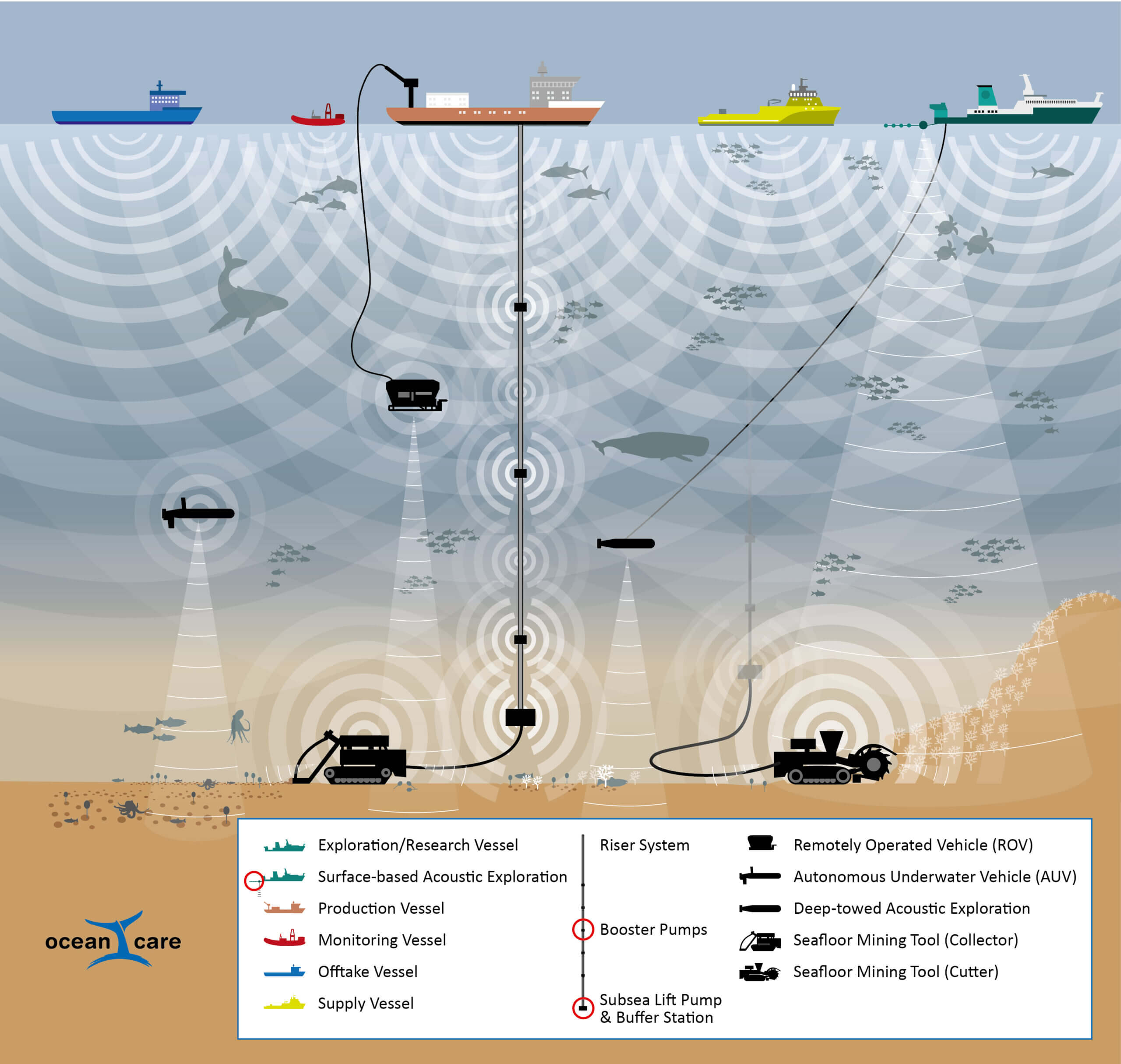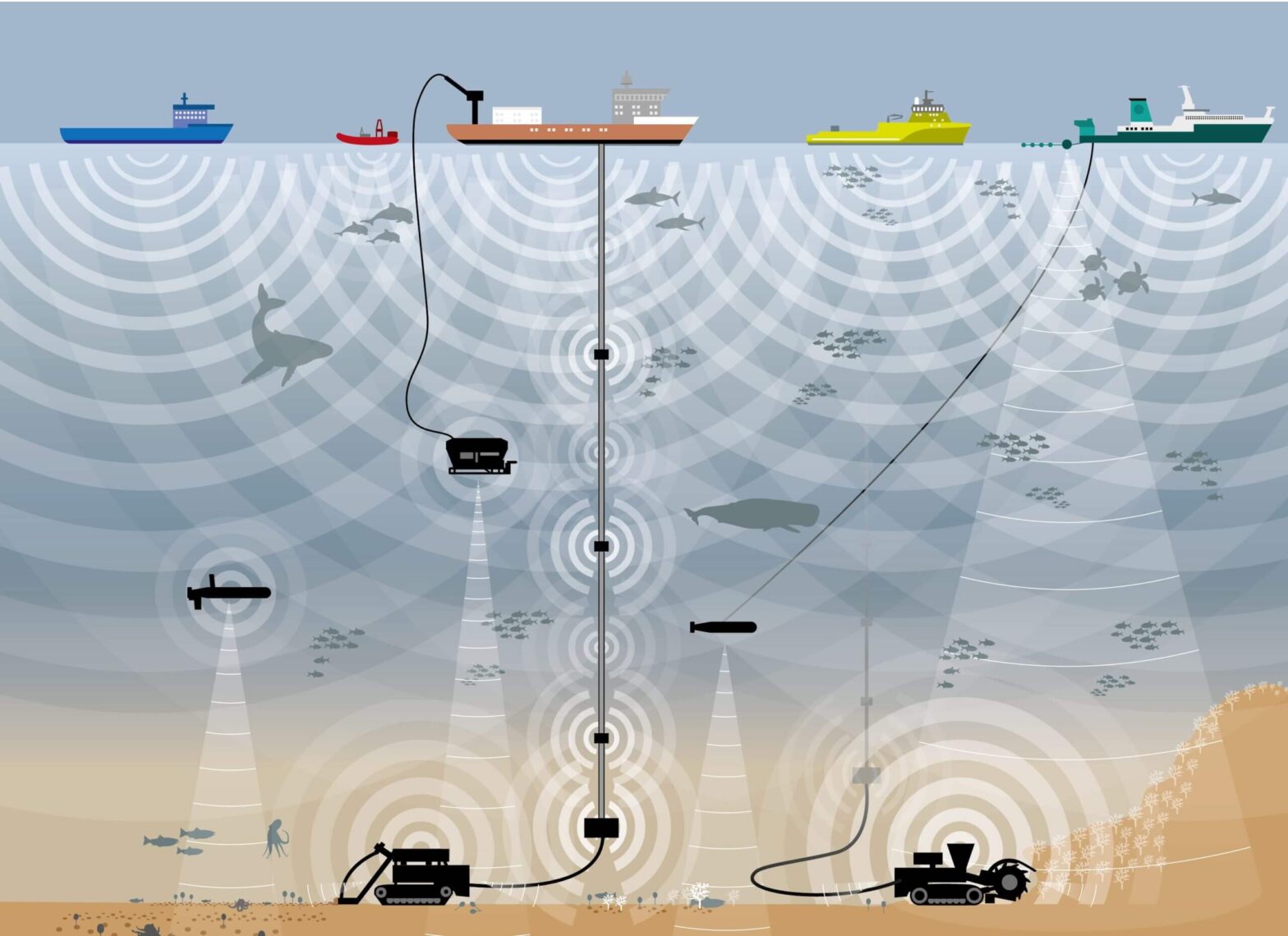Deep-sea Mining: The noise hazard is increasing
Noise in the oceans is dangerous. It disrupts vital acoustic communication, behaviour and orientation of marine life. Sound pressure waves can also physically harm animals in the water. For more than 20 years, OceanCare has been campaigning for silent oceans. Now a new threat looms: deep-sea mining could soon generate even more noise, affecting huge areas of ocean and lasting for decades.
The technologies needed for deep-sea mining are still in the development phase. Some well-known systems, such as sound waves (seismic), are already being used to study the seabed. For exploration of deep-sea minerals already today some well-known systems, such as sonars are used.
As far as the projected mining of minerals in the deep-sea is concerned however, information on noise levels and frequencies of the machines is still lacking. One thing is certain: They will generate noise and vibrations. The consequences for life in the deep sea are still unclear. However, extensive studies from higher water layers show how harmful noise in the sea can actually be.
Noise from the seabed to the surface
When searching for minerals in the deep sea, ships transmit powerful sound pressure waves through the water into the depths. Their echo provides information about the tectonic composition of the seabed. Where raw materials are located, underwater vehicles also use acoustic emissions to investigate their existence even more precisely.
Raw materials located in this way are then extracted from the seabed with huge machines, collected and crushed. The operation is monitored by underwater vehicles. The positioning of these technologies is done by means of sound waves, similar to the echo-location of whales. Extracted mineral resources are transported up to the water´s surface over hundreds or even thousands of metres by riser systems driven by powerful pumps. All these processes are likely to be extremely noisy.
Once the material has been lifted to the surface, it is hoisted on to ships that have to maintain a precise position over a long period of time, which is only possible with loud propulsion systems. Noise is also generated by the ships that bring the raw materials ashore.
Since the extraction of raw materials in the deep-sea is only worthwhile if large areas are worked on around the clock for years to decades, the entire ecology of huge marine areas is at stake in this type of mining.
OceanCare defends the precautionary principle
In 2021, OceanCare published a report outlining current information available regarding anticipated noise emissions from deep-sea mining and how they might affect marine life. The document summarizes existing legal and political guidelines for marine acoustics and highlights how little these are incorporated into deep-sea mining negotiations.
It is precisely due to the fact that the International Seabed Authority has barely addressed the noise hazards from deep-sea mining that OceanCare is calling for a temporary ban on the planned mineral mining on the seabed. A moratorium should be imposed and maintained until knowledge gaps are closed on acoustic marine pollution from deep-sea mining and that maximum noise and vibration ceilings are contractually regulated to ensure that life in the ocean depths is not endangered.
Since the corresponding scientific fundamentals must first be determined, the precautionary principle must be applied. This is the only way to prevent man´s hunger for resources from destroying a habitat of immense relevance for the planet´s ecology.
Infographic on noise generated by deep sea mining

